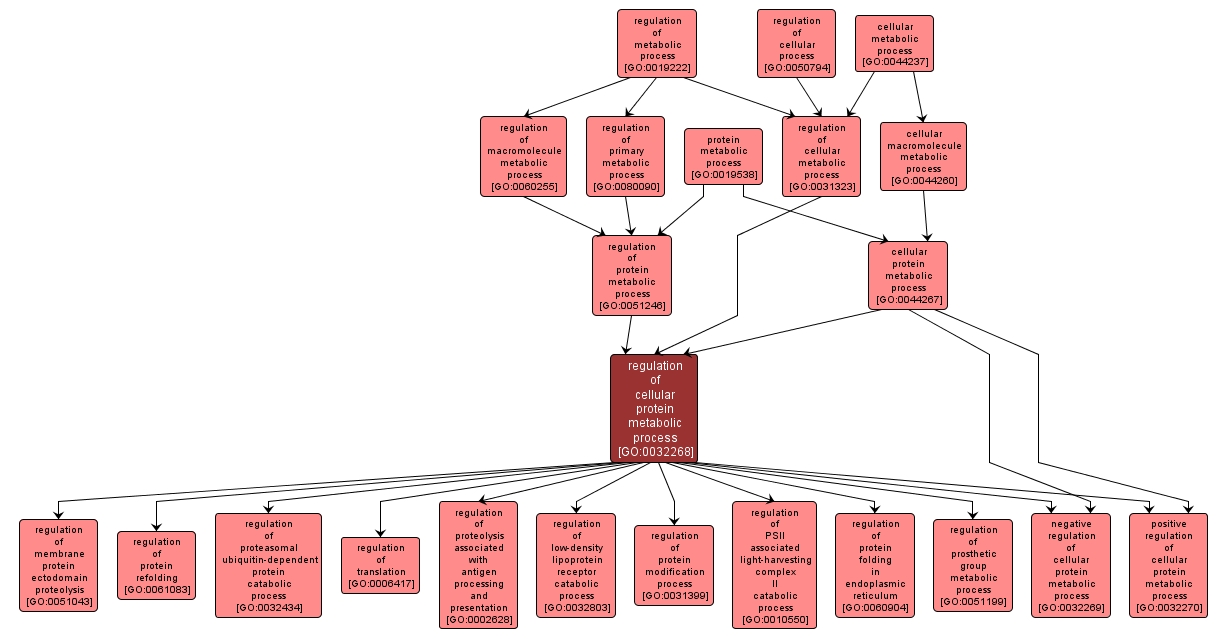GO TERM SUMMARY
|
| Name: |
regulation of cellular protein metabolic process |
| Acc: |
GO:0032268 |
| Aspect: |
Biological Process |
| Desc: |
Any process that modulates the frequency, rate or extent of the chemical reactions and pathways involving a protein, occurring at the level of an individual cell. |
Synonyms:
- regulation of cellular protein metabolism
|
|

|
INTERACTIVE GO GRAPH
|














